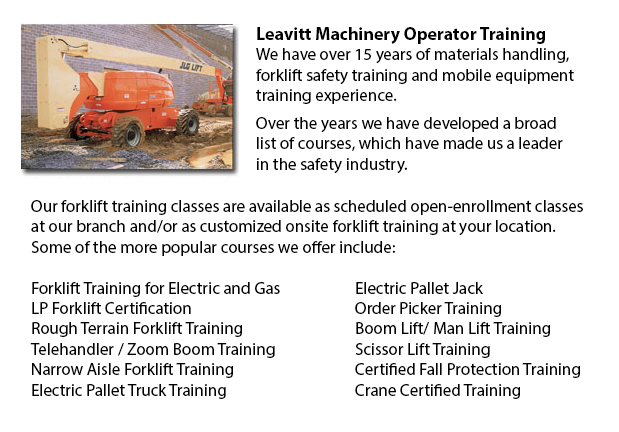
Sudbury Aerial Boom Lift Ticket - Aerial hoists can be utilized to accomplish numerous unique duties performed in hard to reach aerial spaces. A few of the tasks associated with this type of lift include performing daily upkeep on buildings with high ceilings, repairing phone and power cables, raising heavy shelving units, and trimming tree branches. A ladder could also be utilized for many of the aforementioned jobs, although aerial platform lifts offer more safety and strength when properly used.
There are several different models of aerial forklifts available, each being able to perform slightly unique jobs. Painters will sometimes use a scissor lift platform, which can be used to reach the 2nd story of buildings. The scissor aerial hoists use criss-cross braces to stretch and enlarge upwards. There is a table attached to the top of the braces that rises simultaneously as the criss-cross braces lift.
Cherry pickers and bucket trucks are a further version of the aerial lift. Commonly, they possess a bucket at the end of a long arm and as the arm unfolds, the attached bucket platform rises. Lift trucks use a pronged arm that rises upwards as the lever is moved. Boom lifts have a hydraulic arm that extends outward and lifts the platform. Every one of these aerial hoists call for special training to operate.
Training programs offered through Occupational Safety & Health Association, acknowledged also as OSHA, embrace safety steps, system operation, upkeep and inspection and machine load capacities. Successful completion of these education programs earns a special certified license. Only properly qualified individuals who have OSHA operating licenses should drive aerial lifts. The Occupational Safety & Health Organization has established rules to uphold safety and prevent injury when utilizing aerial platform lifts. Common sense rules such as not using this machine to give rides and making sure all tires on aerial lifts are braced so as to hinder machine tipping are noted within the guidelines.
Sadly, data reveal that in excess of 20 aerial lift operators pass away each year when operating and almost ten percent of those are commercial painters. The bulk of these accidents were caused by inappropriate tie bracing, for that reason many of these may well have been prevented. Operators should ensure that all wheels are locked and braces as a critical security precaution to stop the instrument from toppling over.
Other suggestions involve marking the surrounding area of the machine in an obvious way to safeguard passers-by and to ensure they do not approach too close to the operating machine. It is imperative to ensure that there are also 10 feet of clearance between any utility cables and the aerial hoist. Operators of this equipment are also highly recommended to always have on the proper safety harness when up in the air.
-
Wheel and Track Loader Training in Sudbury
Lift trucks are obtainable in several different models that have different load capacities. The majority of average forklifts used in warehouse environment have load capacities of 1-5 tons. Bigger scale units are utilized for heavier loads, like for... More -
Sudbury Aerial Lift Certification
Sudbury Aerial Lift Certification - Aerial Lift Certification is for individuals who requires an in-depth understanding of aerial lift safety. Inspectors and operators, supervisors, maintenance workers and construction craftsmen must perform a traini... More -
Sudbury Forklift Certification Schools
Sudbury Forklift Certification Schools - Within North America, forklift certification is mandatory, making forklift training programs necessary for both the company and their employees working as forklift operators. Forklift training focuses on healt... More -
Sudbury Boom Lift Operator Training
Sudbury Boom Lift Operator Training - A cherry picker refers to a type of aerial work platform. Cherry pickers include a platform or bucket at the end of a hydraulic lifting system. The device is likewise called a man lift, boom lift, basket crane or... More -
Sudbury Telehandler Certification
Sudbury Telehandler Certification - Telehandler certification programs are both for operators who have some experience driving a standard forklift and for those with no experience. The real-world training offered by these courses produces graduates w... More -
Operator Safety Training, Re-Qualification Training, In-House Instructor Training in Sudbury
Lift trucks are utilized in just about all industrial construction sites and in warehouse operations and in boat yards. The reach feature of a lift truck is a vital component used in several applications like for example when a shelving system is bei... More -
Crane / Overhead Crane / Self-Erect Crane / Truck Mounted Crane / Hydraulic Cranes Training in Sudbury
Bridge cranes or overhead cranes are a type of industrial material handling crane making use of a line and hook apparatus which runs on a horizontal beam running along two widely separated rails. Lots of overhead cranes could be seen in a long factor... More -
Sudbury Forklift Safety Training
Sudbury Forklift Safety Training - Anyone who wants to operate a lift truck should take a forklift safety training course in order to become a certified forklift truck operator. There are a variety of ways to obtain forklift training. Programs are pr... More

Forklift Certification Sudbury
TOLL FREE: 1-888-254-6157
Sudbury, Ontario
forkliftcertificationsudbury.com
Email Us
About Us


